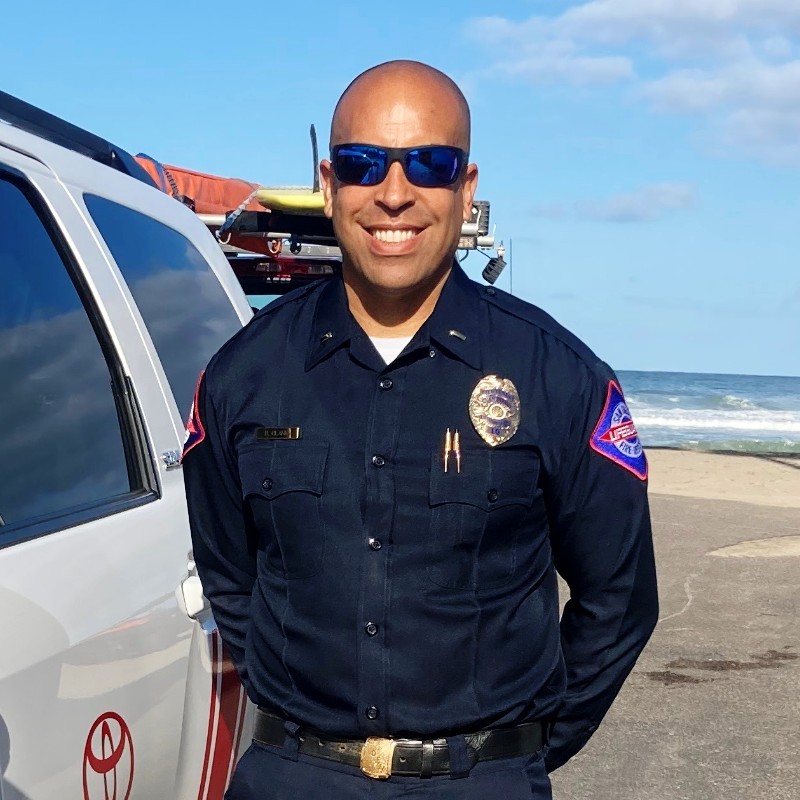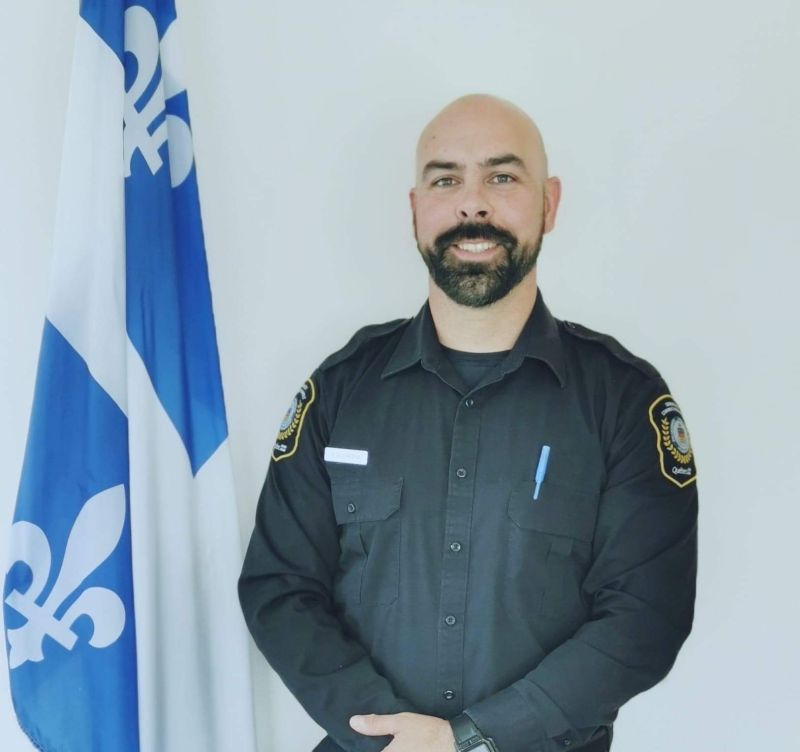A Silent Epidemic: Prehospital Priorities in the Management of Pediatric Drowning
Release Date: 11/20/2023
 Informed Pediatric Trauma Care: The Compendium
Informed Pediatric Trauma Care: The Compendium
The Pediatric EMS Podcast
Episode 17: Informed Pediatric Trauma Care: The Compendium Brought to you by The National Association of EMS Physicians (NAEMSP) and Missouri Emergency Medical Services for Children (MO-EMSC). Hosts: Dr. Joelle Donofrio-Odmann and Dr. Joseph Finney Website: Guest Experts: Mark Cicero, MD John Lyng, MD Episode Summary: In this episode, we explore the latest NAEMSP Prehospital Trauma Compendium on Pediatric Severe and Inflicted Trauma, published in Prehospital Emergency Care (2025). Joined by pediatric EMS and trauma experts, we discuss how Emergency Medical Services (EMS)...
info_outline Pediatric EMS Podcast Shorts: Croup
Pediatric EMS Podcast Shorts: Croup
The Pediatric EMS Podcast
Episode 16 (Short): Prehospital Croup Management Brought to you by The National Association of EMS Physicians (NAEMSP) and Missouri Emergency Medical Services for Children (MO-EMSC). Hosts: Dr. Joelle Donofrio-Odmann and Dr. Joseph Finney Website: Episode Summary In this SHORT episode, we discuss one of the most common pediatric respiratory emergencies, croup, and what EMS providers need to know during peak viral season. Drawing from real-life experience and current field trends, we review how to recognize upper airway obstruction, differentiate it from lower airway...
info_outline Prehospital Pediatric Traumatic Cardiac Arrest: Priorities for Care
Prehospital Pediatric Traumatic Cardiac Arrest: Priorities for Care
The Pediatric EMS Podcast
Episode 15: Prehospital Pediatric Traumatic Cardiac Arrest: Priorities for Care Brought to you by The National Association of EMS Physicians (NAEMSP) and Missouri Emergency Medical Services for Children (MO-EMSC). Hosts: Dr. Joelle Donofrio-Odmann and Dr. Joseph Finney Website: GET CEU CREDIT THROUGH PRODIGY EMS Episode Summary Episode 15 of the Pediatric EMS Podcast focuses on the case of a pediatric out-of-hospital traumatic cardiac arrest. Dr. Finney and Dr. Romeo Ignacio discuss the unique management priorities for traumatic arrest and how it differs compared to...
info_outline Enhancing Pediatric Pre-Hospital Care: Termination of Resuscitation Criteria and Real-World Impact
Enhancing Pediatric Pre-Hospital Care: Termination of Resuscitation Criteria and Real-World Impact
The Pediatric EMS Podcast
Episode 14: Prehospital Pediatric Termination of Resuscitation (TOR) Brought to you by The National Association of EMS Physicians (NAEMSP) and Missouri Emergency Medical Services for Children (MO-EMSC). Hosts: Dr. Joelle Donofrio-Odmann and Dr. Joseph Finney Website: GET CEU CREDIT THROUGH PRODIGY EMS Episode Summary: In this episode of the Pediatric EMS Podcast, Dr. Joseph Finney and Dr. Joelle Donofrio-Odmann are joined by Dr. Matt Harris and Dr. Jen Anders to explore groundbreaking developments in pediatric termination of resuscitation (TOR)...
info_outline Prehospital Pediatric Respiratory Distress
Prehospital Pediatric Respiratory Distress
The Pediatric EMS Podcast
Episode 11: Prehospital Pediatric Respiratory Distress Brought to you by The National Association of EMS Physicians (NAEMSP) and Missouri Emergency Medical Services for Children (MO-EMSC). Hosts: Dr. Joelle Donofrio-Odmann and Dr. Joseph Finney Website: GET CEU CREDIT THROUGH PRODIGY EMS Content Experts: Joelle Donofrio-Odmann, DO and Joseph Finney, MD Overview: This podcast episode focuses on pediatric respiratory distress in prehospital settings, providing key insights for EMS providers to assess and manage these cases effectively. Dr. Joelle...
info_outline How To Approach Pediatric Traumatic Brain Injury: The Evidence and the Anatomy
How To Approach Pediatric Traumatic Brain Injury: The Evidence and the Anatomy
The Pediatric EMS Podcast
This episode is brought to you by Styker Medical Corporation with their comittment to improving medical education. In this episode we discuss the priorities of pediatric head and cervical spine imagine with the experts in the fields of Pediatric Emergency Medicine and Neurosurgery. Learn from those who know about how to manage your next pediatric patient with traumatic brain injury or cervical spine injury. With TBI a major cause of pediatric death, you don't want to miss this episode with all you need to know. Rememer: Avoid the H bombs Hypotension (<90mmhg) Hypoxia (<90%)...
info_outline Pediatric Prehospital Trauma Overview: Hitting the Highlights
Pediatric Prehospital Trauma Overview: Hitting the Highlights
The Pediatric EMS Podcast
This series is a collaboration with the EMS for Children Innovation and Improvement Center (EIIC) and will be part of the pre-hospital resources for its Pediatric Education and Advocacy Kit (PEAK) for multisystem trauma. Click on the link to learn more! . In this episode we kick off a multipart series on pediatric trauma just in time for summer and trauma season. Join your two hosts as they tackle the prehospital management of pediatric trauma. Everything from head to toe and the pathophysiology that makes pediatric trauma unique from the adult population. Below are the episode...
info_outline Evidence Empowers Judgement: Evidence Based Guidance on the Management of Traumatic Brain Injury and Cervical Spine Injury
Evidence Empowers Judgement: Evidence Based Guidance on the Management of Traumatic Brain Injury and Cervical Spine Injury
The Pediatric EMS Podcast
In this episode we discuss the future of pediatric head and cervical spine imagine with the very physicians who brought us the groundbreaking research that will forever change how we approach these pediatric injuries. This episode will have you rethinking the evidence behind your own protocols and making adjustments going forward. Brought to you by The National Association of EMS Physicians (NAEMSP) and Missouri Emergency Medical Services for Children (MO-EMSC). Hosts: Dr. Joelle Donofrio-Odmann and Dr. Joseph Finney Website: GET CEU CREDIT THROUGH PRODIGY EMS ...
info_outline Prehospital Pediatric Airway Management: The Past, Present, and Future
Prehospital Pediatric Airway Management: The Past, Present, and Future
The Pediatric EMS Podcast
Brought to you by The National Association of EMS Physicians (NAEMSP) and Missouri Emergency Medical Services for Children (MO-EMSC) and The Emergency Medical Services for Children Innovation and Improvement Center (EIIC) Hosts: Dr. Joelle Donofrio-Odmann and Dr. Joseph Finney Website: GET CEU CREDIT THROUGH PRODIGY EMS Content Experts: Joelle Donofrio-Odmann, DO and Joseph Finney, MD Guest Experts: Welcome back for a special episode outside our normal schedule! This episode was recorded in collaboration with The to provide expert review of prehospital pediatric...
info_outline Resus Recess: Pediatric Cardiac Arrest Literature Review
Resus Recess: Pediatric Cardiac Arrest Literature Review
The Pediatric EMS Podcast
Brought to you by The National Association of EMS Physicians (NAEMSP), Emergency Medical Services for Children (EMSC) and The Emergency Medical Services for Children Innovation and Improvement Center (EIIC) Hosts: Dr. Joelle Donofrio-Odmann and Dr. Joseph Finney Website: Direct Download: GET CEU CREDIT THROUGH PRODIGY EMS In this episode we bring you two experts in pediatric prehospital care who are working tirelessly to identify why caring for children in cardiac arrest is so unique and so challenging. Join us as we review two papers that shed light on this critical care...
info_outline

Brought to you by The National Association of EMS Physicians (NAEMSP)
Hosts: Dr. Joelle Donofrio-Odmann and Dr. Joseph Finney


GET CEU CREDIT THROUGH PRODIGY EMS: https://link.prodigyems.com/pemsp5
Content Experts: Joelle Donofrio-Odmann, DO and Joseph Finney, MD
Special Guests:
Bryan Clark: Marine Safety Lieutenant at San Diego Fire-Rescue Lifeguard and Paramedic
Gina Pellerito: Critical Care Paramedic with Mehlville Fire Protection District, Research Analyst/MOEMSC Chair at MU school of Medicine
Jon Boisvert: City of San Diego Oceanfront Lifeguard, San Diego Junior Lifeguard instructor
B-side Narrator: Joelle Donofrio-Odmann, DO
Editing and Publication: Joseph Finney, MD
Episode Summary
Welcome back to the Pediatric EMS podcast. Where I (Joe) live, summer is winding down, but this episode topic knows no seasonality. It affects everyone and it can happen at any moment. Today, on episode 5 of the pediatric EMS podcast, Joelle and I bring you a two-part episode focused on the silent epidemic of pediatric drowning. Today, in part one, we hear from two San Diego lifeguards who break down how experts in drowning prevention approach water safety, drowning prevention, rescue, and resuscitation. But we will also have a guest from one of our first episodes, Gina Pellerito who will take us through a call she will never forget, one that put her on a career path focused on improving prehospital pediatric care. In part two, we will hear from a whole new group of experts in advocacy, prevention, and expert research including a story you won’t want to miss. You have waited long enough, let’s get into part one and learn how to manage a drowning event.
Disposition: “The decision to admit to an ICU or hospital bed vs observation in the ED or discharge home should consider the severity of the patient’s drowning as well as any co-morbid or premorbid conditions” (Szpilman et al 2020)
The majority of drowning victims are well and without symptoms. Historically, despite well-appearance, all victims of drowning were admitted for observation given concern for sudden clinical deterioration (Noonan et al 1996). This thinking has changed over time, luckily. Now, only a certain group of symptomatic drowning victims will require admission. Except for our most severe patients, if there are symptoms, they will primarily be respiratory in nature. I find it easiest to divide patients into three broad potential categories; well appearing and asymptomatic, symptomatic with respiratory distress, and those who are unresponsive with cardiorespiratory collapse. This can feel like an oversimplification but it is important to help triage patients and determine who can go home, who should be observed, and who needs to be admitted.
Noonan et al in 1996 performed a retrospective chart review of 72 drowning victims. They found that 98% of patients who developed any symptoms did so in the first 4.5 hours. Based on their findings, they recommended the following:
-
Asymptomatic, well appearing in the ED→ Observation for 6-8 hours and discharge if no symptoms develop
-
Stable mildly symptomatic patients should be observed for 6-8 hours and admitted if they deteriorate or fail to improve, supportive care with supplemental oxygen and evaluation for aspiration/edema with CXR should be performed
-
Ill, symptomatic patients should be stabilized in the ED and subsequently admitted to the ICU or general inpatient unit
-
Consider ECG in all patients to screen for arrhythmia if history concerning
Ultimately, most patients can be observed and discharged. Management of the more critically ill patients will require a thoughtful, multidisciplinary approach with the goal of “maintaining adequate oxygenation, preventing aspiration and stabilising body temperature.” (Royal Children’s Hospital Melbourne CPG)
In this episode:
- 3 prehospital experts take us through their experience with pediatric drowning from the perspective of two San Diego Lifeguards and 1 Paramedic
- Highlights from Joe and Joelle on exactly how to approach pediatric drowning management
- Advice for medics and medical directors on training for this low frequency high risk event
- Back to the basics with review of the fundamentals in resuscitation
Resources
https://www.sandiego.gov/lifeguards/junior
https://www.aap.org/en/news-room/campaigns-and-toolkits/drowning-prevention/
Amazing course on pediatric drowning for EMS and bystanders:
Clarifying terms for drowning: https://health.clevelandclinic.org/dry-drowning-separating-fact-from-fiction/#:~:text=When%20you're%20struggling%20underwater,Milk.
Prehospital Readiness: https://emscimprovement.center/domains/pediatric-readiness-project/
Key Take-Aways:
- Training is critical, drill in your agency and with community partners to make sure you are ready
- Focus on the basics: ventilation and high quality CPR
- C-collars are for trauma
- Arrhythmias are uncommon
- Survival requires rapid rescue and bystander resuscitation. Teach your community and your family
- Scene safe! Don't become a second victim
- check out the NASEMSO model guidelines for drowning protocol recommendations and other protocol guidance
Come back for part 2 where we focus on prevention and advocacy in pediatric drowning. Plus, we will have a story you DO NOT WANT TO MISS!
Stay safe and stay sharp.
Joe and Joelle


